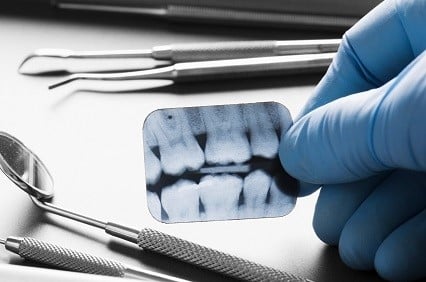Lack of affordable dental care is a problem for low-income families and the healthcare system

With one in six Canadians having difficulty accessing dental care because of cost, insurance, or travel issues, Canada’s public health system must be expanded to include oral health services, according to a pair of policy experts.
In a piece written for Huffington Post Canada, Jacquie Maund, policy and government relations lead at the Association of Ontario Health Centres, and Hazel Stewart, Director of Oral Health Programs at Toronto Public Health pointed out numerous problems with the current system of dental care.
“In Ontario, it's estimated that two to three million people have not seen a dentist in the past year -- the main reason cited being cost,” the pair wrote. While Ontario has some public dental programs, they cover only children under 18 years of age in extremely low-income families and, to some extent, people receiving social assistance.
Vulnerable groups, such as low-wage workers, seniors, and Indigenous people, have no access to dental care, and therefore have the highest rates of tooth decay, gum disease, and dental pain.
Those suffering from dental pain but too poor to see a dentist might go to unlicensed black-market dentists; more often, they approach their family doctors for help. “In 2014, there were almost 222,000 visits to Ontario physician offices for teeth and gum issues,” the article read. However, the doctors are not trained to deal with such issues, so they cannot provide appropriate treatment.
The authors determined that 2014’s statistics translated to a dental pain-related doctor’s visit almost every three minutes across the province. With OHIP paying doctors a minimum of $33.70 per 15-minute patient visit, the tooth-related appointments amounted to at least $7.5 million in additional costs for Ontario's health care system.
Citing a survey by the Ontario Oral Health Alliance, the article said many private dental practices refuse to accept adults who are on social assistance, admitting to frustration over the fact that low-income people cannot pay and often miss appointments. Low-income patients, on the other hand, prefer to be treated in public dental clinics where they do not feel stigmatized.
Given all that, the authors contended, it would be better for public healthcare dollars to be spent on public oral health programs for low-income groups. In particular, the authors suggested that oral services be delivered within community health centres and other places where vulnerable groups already receive care.
“At community health centres, low-income people can get their teeth checked while also being referred to other appropriate services, such as diabetes management programs, the mental health team, nutrition programs and primary health care — all delivered at the same location,” they said.
Related stories:
Ottawa facing court action over denied dental claim
Review reveals Alberta has highest dental fees in Canada
In a piece written for Huffington Post Canada, Jacquie Maund, policy and government relations lead at the Association of Ontario Health Centres, and Hazel Stewart, Director of Oral Health Programs at Toronto Public Health pointed out numerous problems with the current system of dental care.
“In Ontario, it's estimated that two to three million people have not seen a dentist in the past year -- the main reason cited being cost,” the pair wrote. While Ontario has some public dental programs, they cover only children under 18 years of age in extremely low-income families and, to some extent, people receiving social assistance.
Vulnerable groups, such as low-wage workers, seniors, and Indigenous people, have no access to dental care, and therefore have the highest rates of tooth decay, gum disease, and dental pain.
Those suffering from dental pain but too poor to see a dentist might go to unlicensed black-market dentists; more often, they approach their family doctors for help. “In 2014, there were almost 222,000 visits to Ontario physician offices for teeth and gum issues,” the article read. However, the doctors are not trained to deal with such issues, so they cannot provide appropriate treatment.
The authors determined that 2014’s statistics translated to a dental pain-related doctor’s visit almost every three minutes across the province. With OHIP paying doctors a minimum of $33.70 per 15-minute patient visit, the tooth-related appointments amounted to at least $7.5 million in additional costs for Ontario's health care system.
Citing a survey by the Ontario Oral Health Alliance, the article said many private dental practices refuse to accept adults who are on social assistance, admitting to frustration over the fact that low-income people cannot pay and often miss appointments. Low-income patients, on the other hand, prefer to be treated in public dental clinics where they do not feel stigmatized.
Given all that, the authors contended, it would be better for public healthcare dollars to be spent on public oral health programs for low-income groups. In particular, the authors suggested that oral services be delivered within community health centres and other places where vulnerable groups already receive care.
“At community health centres, low-income people can get their teeth checked while also being referred to other appropriate services, such as diabetes management programs, the mental health team, nutrition programs and primary health care — all delivered at the same location,” they said.
Related stories:
Ottawa facing court action over denied dental claim
Review reveals Alberta has highest dental fees in Canada



